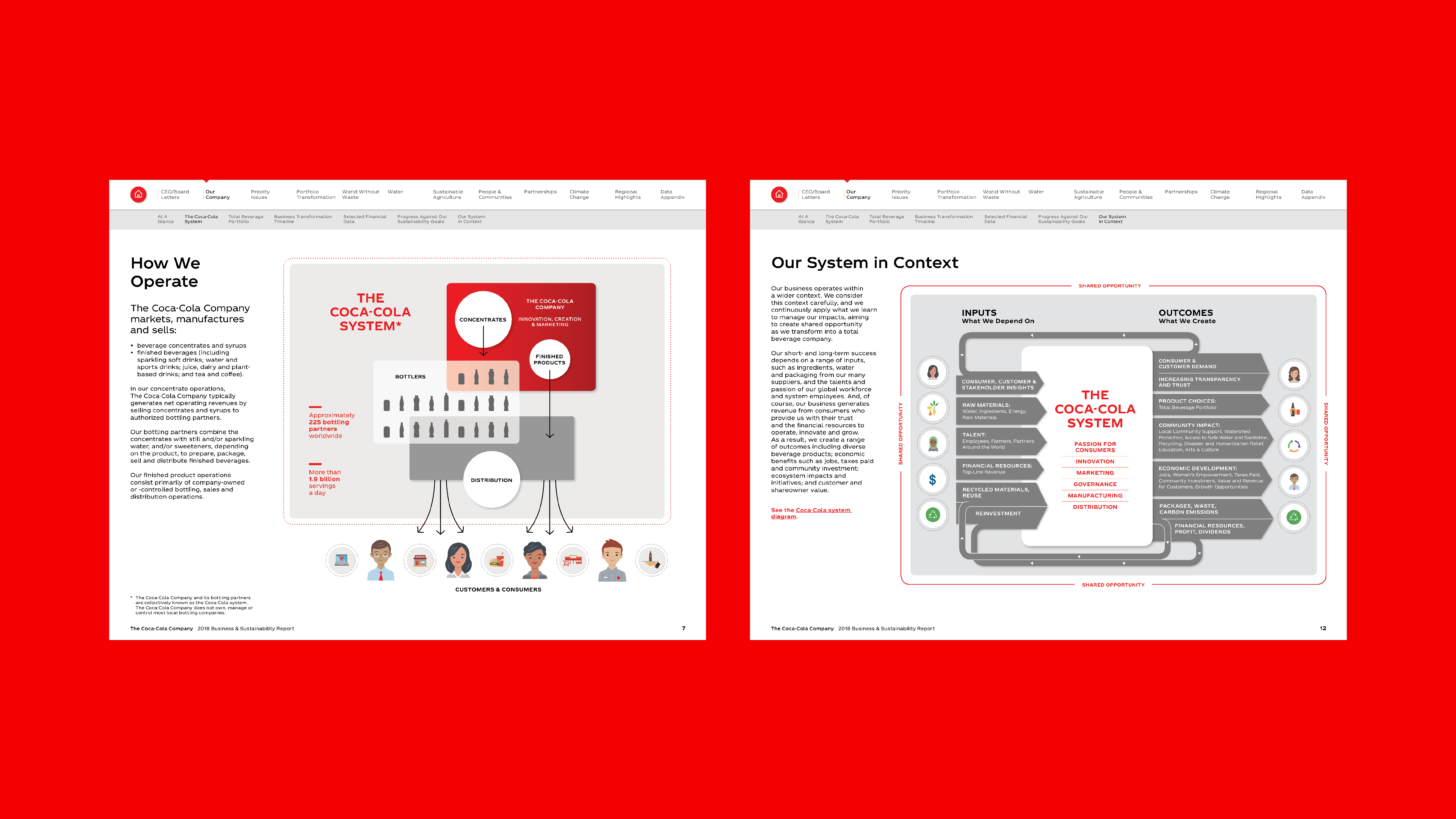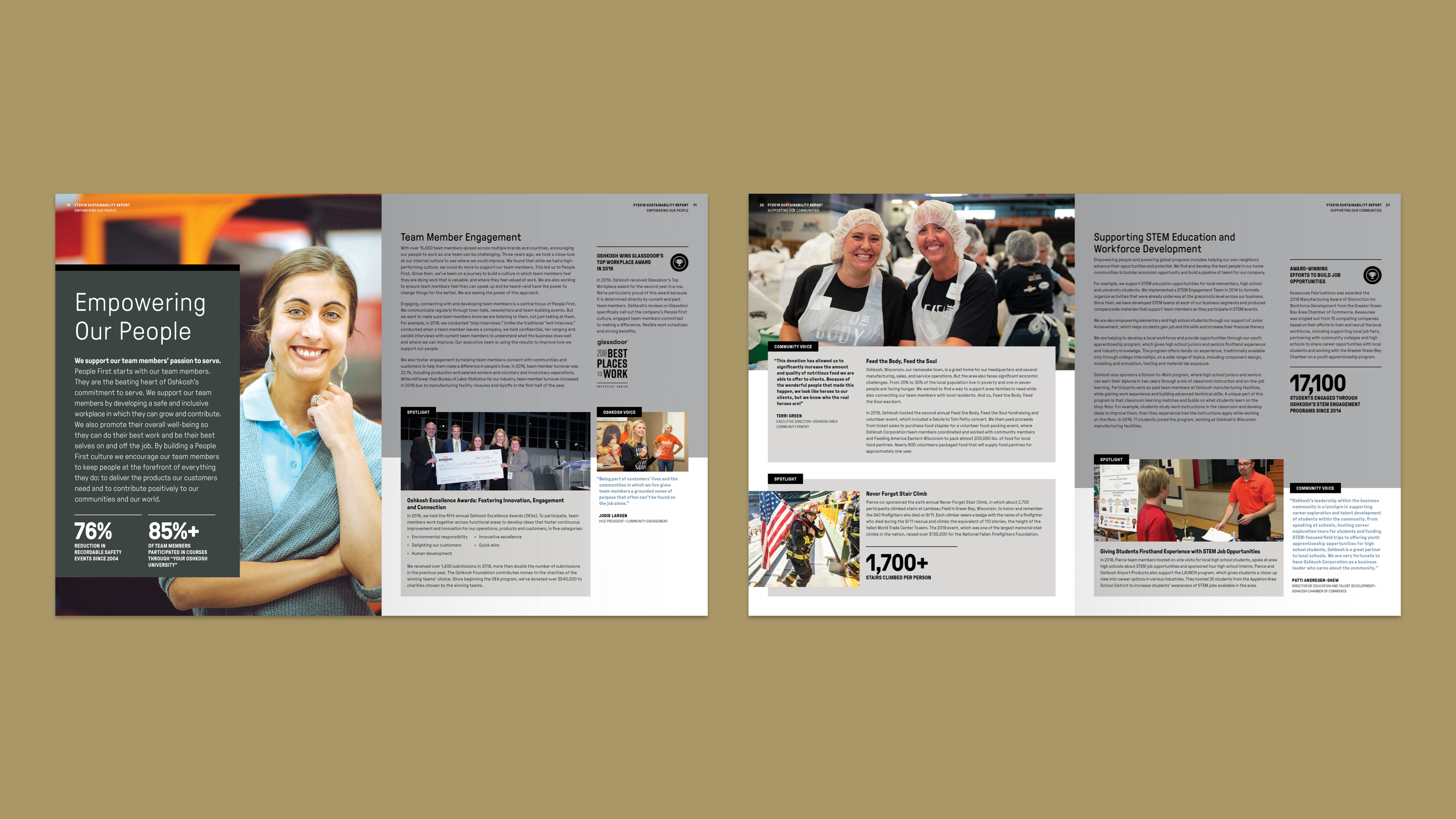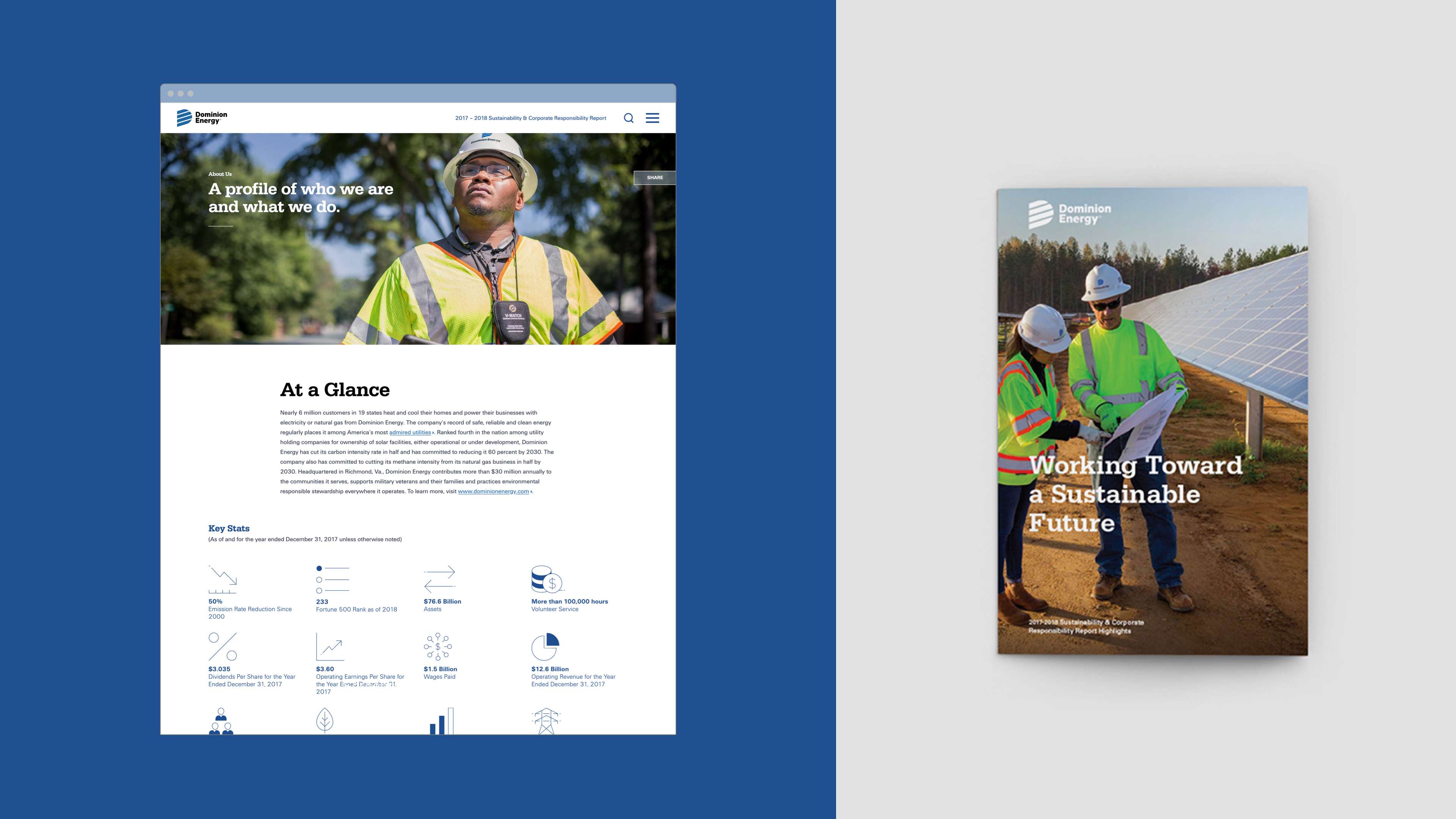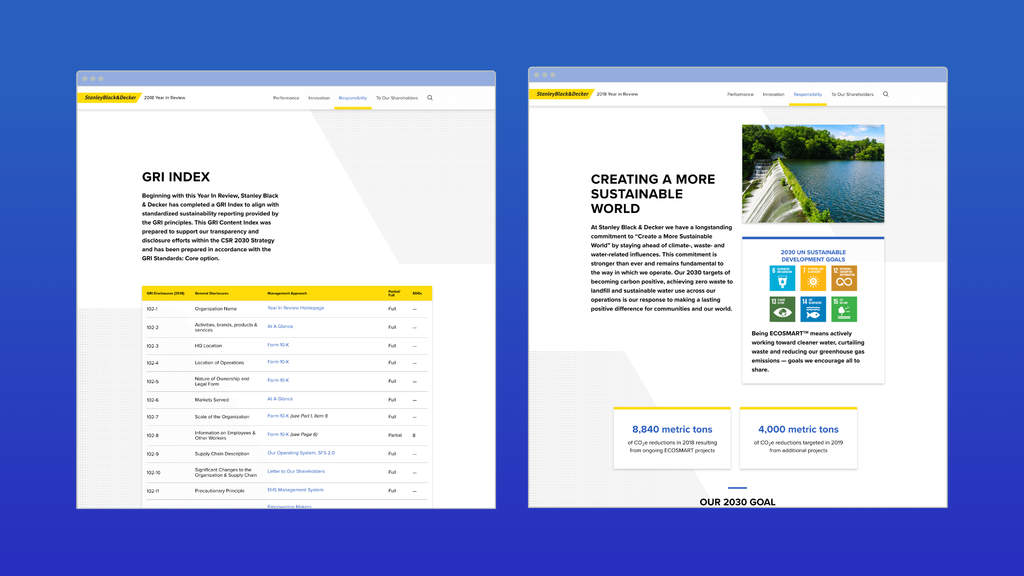12 Strategies to Get People Reading your CSR or Sustainability Report
Your CSR or Sustainability Report is the result of a lot of time, effort and money. So, be sure it’s seen and read! Your report can be a foundation of rich content—stories, facts, testimonials, and data—for use throughout the year. These tested strategies will each increase engagement, and you can certainly use them all.
1. Create ‘snack-able’ content and get social
Attention spans are shorter than ever. So, meet your readers where they are. Share stories, compelling facts, and videos in bite-size pieces on social media and other channels, in addition to the “Here’s our report” message. With a link back, these pieces extend the life of the report. Collaborate with your social team early, or develop your own plan.
2. Map audience to message to platform
Think about which of your audiences are most often found on which platforms and customize messages in “their language.” Your Influencers may have a consumer perspective and use Facebook, while the Financial Analysts see you through the lens of your financial statements, and NGOs are inherently politically active and might prefer Twitter. Don’t forget your very invested employee audience too, including your intranet, Yammer or Workplace.
The full report is a central vehicle, the hub for all the social media spokes. Be sure that deeply interested readers can find the report information aggregated and clearly identified. We’d recommend either a contained web experience (section or microsite), a PDF, or both. Loose collections of articles are easily missed and diminish the impact of the sum of the parts. And, the last thing you want is one of the “raters & rankers” to draw the wrong conclusions because they didn’t find your information.
3. Make the report easy to scan and navigate
Whether you create a PDF or a full web experience, help readers find what they are looking for quickly. Use clear, consistent navigation and be sure there is obvious information hierarchy on each page. Use headlines, subheads, callouts, and facts so a busy, distracted reader will still get the gist. If you don’t, it is a wall of text that no one can, or will, read.

4. Use words economically
Explain your strategy and accomplishments, your priorities and material issues, in a brief, clear and visual way.
5. Be visual!
Long-form copy can be off-putting, but a good chart or infographic can really help get the point across. Complicated information is often easier to grasp when it is explained visually, and images bring stories to life. Don’t underestimate the power of quality photography or art. Don’t settle for cliche stock art, you can do better! (Even with stock art.)
6. Feature real people
People relate to people, not to companies or “entities”. Bring your report to life by including employees, partners, stakeholders, or beneficiaries of your programs. Include first-person stories and let them “speak” through testimonials, with a picture, and—for extra points—on video. Data is good, but emotion moves people.

7. Use a sustainability narrative thread
If readers can easily see how each section of your report connects to your larger Sustainability narrative—the “why”—they are more likely to keep reading and take away your key messages. Use every opportunity to reinforce how the pieces add up to a simple, clear narrative whole.
8. Create a web-native experience
PDFs are portable, and easy to download or print, but can be cumbersome to read on mobile devices and difficult to promote on social media. Many readers are overwhelmed, intimidated, or just won’t dive into a long or dense PDF. With a PDF, you also lose the opportunity for interactivity, videos, and deeper engagement as well as the ability to collect analytics.
A web-native experience can be easy to read, easy to get to specific content each reader wants, fun to interact with and mobile optimized. Different readers prefer different formats, the best strategy may be to use both formats.
9. Offer a CSR Summary or Highlights
Offer a shorter piece for casual readers who just want the highlights. You can create a separate PDF summary, a highlights PowerPoint, or an “At A Glance” page on the website. (We don’t recommend video for these high-level key facts, they are difficult to skim. Save that investment for storytelling). Always link back to the full report, in case a casual reader becomes interested and wants the deep dive.

10. Align to Frameworks
For deeply invested stakeholders, consider how your company will be compared. Choosing to include one or more frameworks in your reporting gives various constituencies an onramp into your information. Everyone has their favorites, and it is an alphabet soup! But, choosing one or a few that work for your company is enough to keep the information comparable. A few to get started:
- Global Reporting Initiative (GRI): close to the CSR global standard
- Sustainability Accounting Standards Board (SASB): Industry-specific, the financial impacts of sustainability
- UN Sustainable Development Goals (SDGs): 17 goals to solve major global challenges by 2030; choose those most relevant to your business
- Task Force on Climate-related Financial Disclosures (TCFD): an industry-led initiative created a set of recommendations for voluntary climate-related financial disclosures
- Plus: IIRC, CDP, PRI, CDSB, the UN Global Compact, and more.

11. Engage Investor Relations
Investors are increasingly asking for Environmental, Social and Governance (ESG) information. From climate change, to your workforce, to waste, investors (and other stakeholders) want to understand how your company is managing its resources, and how truly ‘sustainable’ it is given the changes we see in our world. As more tough questions come in, information is being added to IR websites, and socially responsible investors, raters and rankers always want more. These audiences are keen to see metrics and financials but needs the context as well. Collaborate with the IR team. They should see your report as a tool for communicating with investors.
12. Tell your audiences it’s there
Creating a report is not enough—the modern world provides too much information to compete for our attention. Tell your audience when you release the report, and then tell them again. Messages are more effective when they’re repeated (the rule of 7 applies).
Promotion could take the form of an email, press release, paid search ad, a banner on your website and intranet and especially on your social channels. When websites and online PDF’s are promoted, traffic spikes. This may be the most important strategy of all.
As you plan your own efforts…
The potential — and demand — for CSR and Sustainability content keeps growing. To build stronger relationships, and get the most bang per reporting investment dollar, companies should leverage content throughout the year on multiple platforms, engaging stakeholders along the way. Draw readers to your report, and give them an ‘onramp’ to your content. Increased readership will follow.
Struggling to effectively communicate your story? Ideas On Purpose can help.